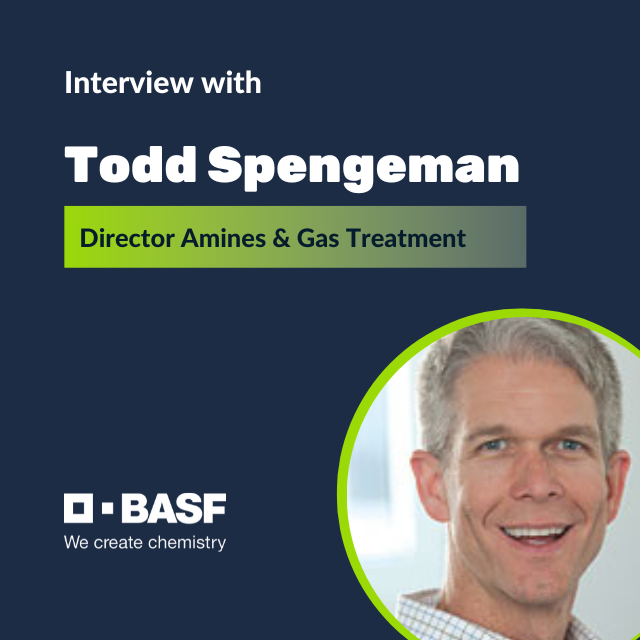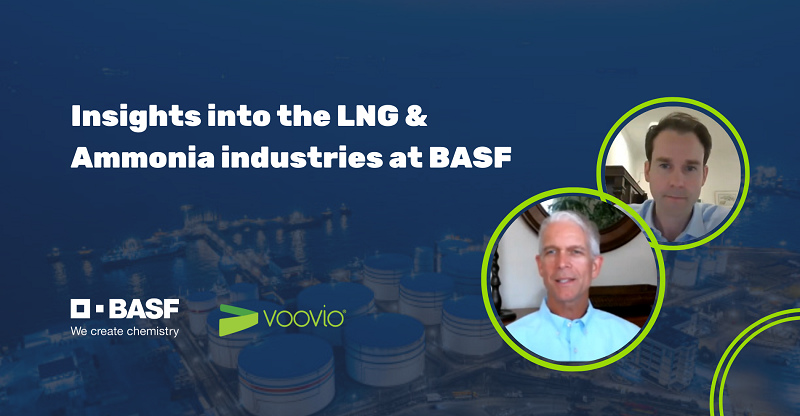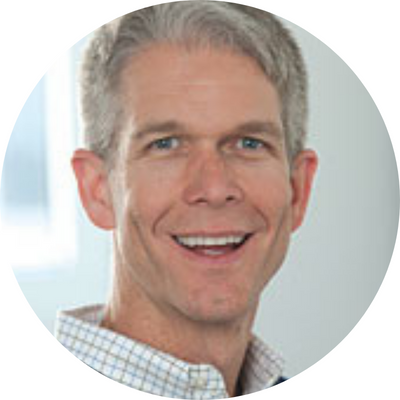In this article, Todd Spengeman, Director Standard Amines & Gas Treatment at BASF takes part in an interview with us to share his valuable insights on the LNG & Ammonia industries at BASF. In this conversation together with Christian McDermott (Global Market Coordinator at Voovio) he talks about the current demand for LNG and Ammonia driving expansion in the US; the biggest challenges, the growing skills gap and ways they are handling these trends.
See the full interview here:
Todd, great to see you again and thank you for meeting with me. Tell us a bit about yourself.
I’m the Director for Standard Amines and Gas Treatment at BASF, responsible for all the business in North and South America for Standard Amines. This includes all of your commodity Amines and the Gas Treatment business, which is about removing acid gas (CO2 and Sulphur) out of industrial gases e.g. Natural Gas to produce LNG or Ammonia in the Fertilizer business. I’ve been with BASF for 33 years.
Our LNG and Ammonia customers use BASF technology and chemistry in the purification of natural gas to make LNG and Ammonia. You take natural gas, convert it to carbon monoxide, carbon dioxide and hydrogen streams, and then you use that to produce Ammonia and LNG.
How is the current demand for LNG driving expansion in the US & how competitive is US LNG?
LNG has been at the forefront of the news lately with recent world events. Even before this, LNG has been a popular fuel source as Natural Gas has been a low-cost fuel. There’s been a high demand for Natural Gas because of the profit opportunities. Now, there has been a shift from exports to Asia to exporting more to Europe. Nearly 60% of all LNG capacity was shipped to Europe this year. We might now see an even higher percentage of LNG going to Europe. The conversion of Natural Gas to LNG is growing, more capital projects are under way, the industry in the US is expanding. The US LNG market will continue to grow and be strong.
Let’s touch on Ammonia. What about using Ammonia as a possible fuel source for industries such as shipping? What would this mean for the industry?
Right now, most Ammonia is used as a fertilizer. More than 90% goes to Fertilizer. But a significant amount goes to the chemical business, e.g. it is used in the Amines processing business. Ammonia has struggled in recent years, with an excess of capacity and consolidation of the market. In the last 18 months, there have been shifts in market consolidation, plant run rates are generally higher now and there’s a lot more opportunity in the Ammonia industry. It is getting stronger.
Using it as a fuel source is of growing interest. Its chemistry is basically a nitrogen atom with hydrogen added, so there’s no carbon. It is a clean fuel, carbon free. As you know, the world is trying to come up with a lower carbon footprint system. The marine industry is looking at Ammonia, and also LNG, to improve its environmental impact. If the shipping industry converts to Ammonia, it would be a great growth opportunity for US and Canada producers with all the shipping routes we have on the continent.
What are the big challenges that producers of LNG, Ammonia & other products face right now?
The really big challenges are twofold: supply chains and personnel.
Supply chain movements of raw materials, moving products from A to B, is a challenge across sea or land. For example, there is a huge shortage of truck drivers. I heard that in the Port of Los Angeles, if you had 200 truck drivers working 24/7 for a year it wouldn’t solve the backlog they have now.
Resources and personnel, however, it’s probably the biggest challenge. The chemical industry is not an industry that attracts a lot of people. It’s an older workforce. We see a lot of retirements happening, and a lot of movements. We are struggling to get people across all aspects of the business: marketing, sales, and manufacturing. We try to get the best people we can and hold onto them.
So, this Skills Gap that is growing across the industry due to retirements and employee turnover: How is it affecting LNG and Amines/Syngas production?
The Skills Gap is huge. Retaining manufacturing expertise is critical. One of the things we are trying to do at BASF in my organization is put young people with experienced people to facilitate knowledge transfer. That interaction is important. In fact, we recently had a 2-day workshop in Germany to talk about how to solve our skills gap. On the manufacturing side, it’s tough to deal with this due to the nature of the environment. It’s hard to put experienced with inexperienced people and transition that knowledge out. At the Geismar site, where we produce Amines (some of the Amines in my portfolio), we use Voovio as one solution to help tackle and minimize the knowledge gap. There’s many solutions, but Voovio has been a cornerstone for us in making sure we have something to minimize that knowledge gap. That’s why it was so interesting to bring Voovio into our BASF workshop in Denver to meet our customers, because LNG and Ammonia are dealing with this same challenge.
The ammonia and LNG industries, you could say, have a smaller resource pool (people), yet it seems to be a more global workforce. The LNG industry, for example, is becoming much more transient and global in how they move people around. At the Denver workshop we had recently, almost all the LNG companies were from North America yet most of their employees that joined were all international. They aren’t afraid to have someone in Australia for 5 years and move them to the Gulf Coast in the US. You see a lot of movement in the Ammonia and especially in the LNG industry, and this is part of how they are trying to reduce that knowledge gap.
That’s why Voovio is such an interesting technology, as one step to improve the knowledge gap. It’s helped us at BASF Geismar, and hopefully it will help our customers as well. We hope to bring value to our customers.
Is the industry doing enough to close this skills gap?
We can always do more. As we get more innovative, as technology improves, we see more ideas and opportunities to be more efficient. But are we doing enough? We never do enough; otherwise we wouldn’t be talking about a knowledge gap. On the Gulf Coast we are looking for graduates with advanced technology degrees or process technology degrees from community colleges, so we can build a better base and move it up to a higher level more effectively. New technology, such as VR and Voovio, is also going to help to reduce the knowledge gap.
You mention Ptech colleges. Voovio partners with education providers who offer process technology degrees. It’s key to get good skilled graduates into the manufacturing realm and that the industry retains them.
Most companies in the industry are trying to partner with the Ptech colleges. When we get those types of graduates in the door, all that base level knowledge is already there and we can focus on product and process specific tasks. This helps us move them forward and make them experts more quickly. Those folks that stay 10-20 years in the process are our experts, and they help drive the process steps forward both in safety and production.
About Todd Spengeman
Todd Spengeman spent over 30 years in manufacturing management with BASF. He successfully managed the manufacturing of two specialty alcohols units in Freeport for more than 20 years. Since 13 years he works in Gas Treatment at BASF in Houston licensing technology and solvent sales into industries which need to purify industrial gases, while removing CO2, H2S, COS and mercaptans. Additionally, he’s in the role of Director of Standard Amines & Gas Treatment for BASF in Houston. Todd received a bachelor’s degree in Chemical Engineering from New Mexico State University.
We thank Todd Spengeman for the time to conduct this interview and these interesting insights.





